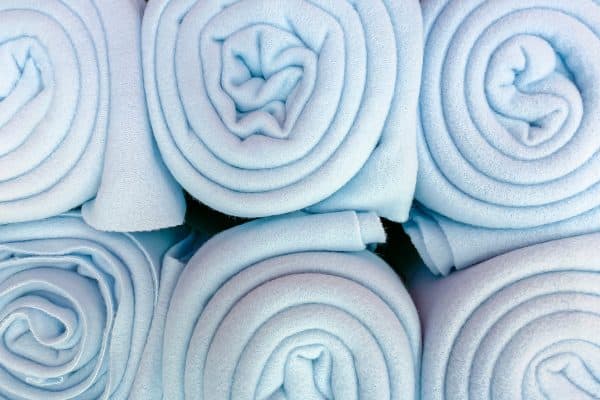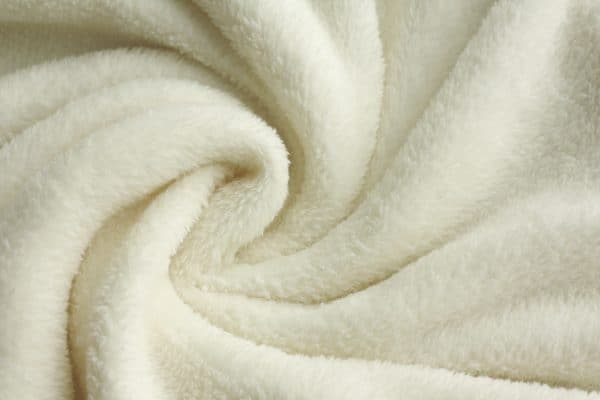Down comforters are great until feathers start poking out of them. But why does this happen and how can you mitigate it? Let's take a look below.
As comforters are used, the thread will start to leak feathers. The quills of the feathers will start to poke through the fabric and cause discomfort. To avoid this, shake the comforter regularly and purchase a duvet cover which is a liner that goes over the comforter and protects it from wear and tear.
There can be mental and physical irritations that occur when your comforter starts to lose feathers. In this article, we will discuss how to avoid these irritations and make your comforter last longer. In addition, we will answer other frequently asked questions about comforters, so read on!
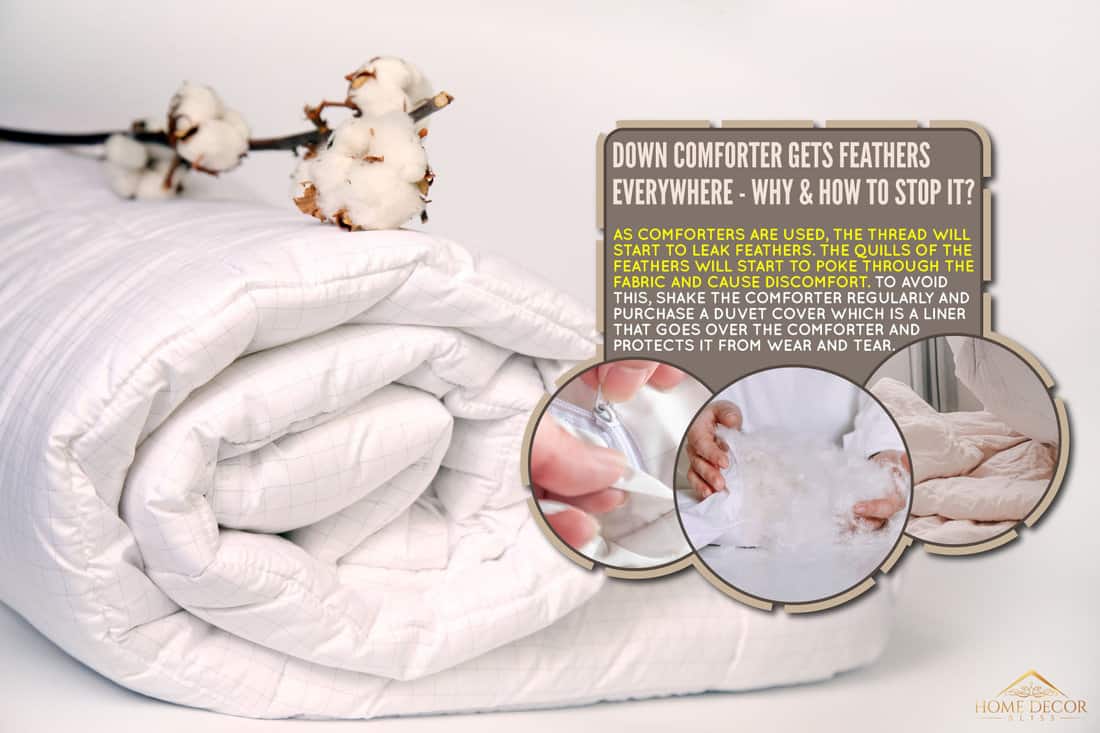
How Prevent Comforter Feathers From Popping Out?
Comforters are filled with either down or synthetic materials. Down is composed of the soft, fluffy undercoating of feathers from ducks or geese.
The amount of loft, or fluffiness, in a comforter is determined by the fill power, which indicates the number of cubic inches that one ounce of down will fill. Higher fill power means more loft and a lighter comforter. The fill power of most down comforters ranges from 450 to 1,000.
As comforters are used, sat on, and laundered, the down and feathers shift and compress. This shifts the quills of the feathers to the surface of the comforter where they eventually poke through the fabric. To prevent this, not only should you shake your comforter regularly but you can purchase a duvet cover.
A duvet cover is a removable liner that goes over the comforter and protects it from wear and tear. Duvet covers are available in a variety of materials, including cotton, linen, and polyester. Most duvet covers have ties or buttons to keep them in place, and they can be removed and laundered just like a comforter.
In addition, duvet covers protect your comforter from dirt, dust, and pet hair. If you have allergies, a duvet cover can also help keep you from sneezing by acting as a barrier between you and the allergens in your comforter.
When shopping for a duvet cover, make sure it is the same size as your comforter. Duvet covers are available in twin, full, queen, and king sizes.
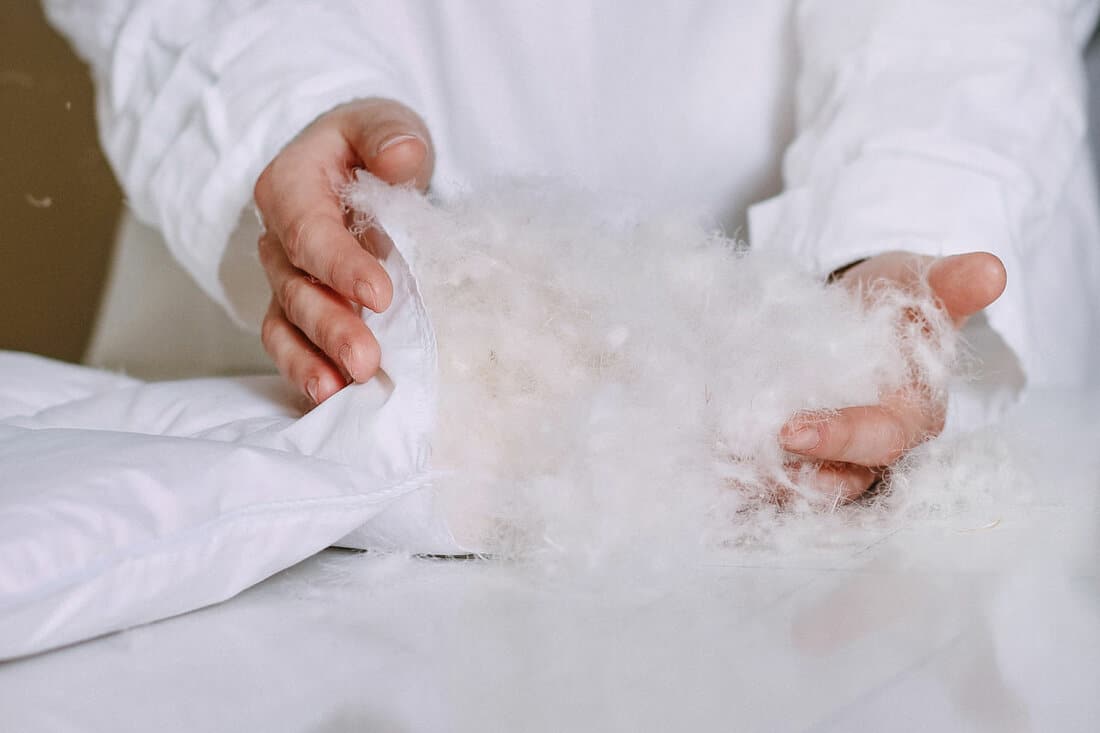
We may include affiliate links and curated AI content to highlight top design styles.
Can You Add More Feathers To A Comforter?
Technically, you can add feathers to a comforter. However, if your comforter is losing feathers, then it's probably time to replace it. The reason being is that it means there is a hole or tear in the fabric that the feathers are coming out of.
If you try to add more feathers, they'll eventually start leaking out as well. It's best to just replace the comforter so you don't have to keep adding more feathers.
Nonetheless, if you are handy, you can add more feathers and sew or patch the hole. Just be aware that this is a temporary solution and you'll probably have to replace the comforter eventually. You might also find a professional cleaner who can add more feathers to your comforter, but this will come at a cost.
How Long Does A Comforter Last?
Depending on the quality of the comforter and how often it is used, a comforter can last anywhere from 10-20 years or more. The reason being is that comforters don't take on weight as often as mattresses or other bedding materials.
To prolong the life of your comforter, follow the care instructions provided by the manufacturer. Most down comforters can be dry cleaned, but some need to be professionally laundered. Also, purchasing a higher quality comforter with a higher fill power will usually result in a longer lifespan.
By taking proper care of your comforter and using a duvet cover, you can keep your comforter in tip-top shape for many years to come!
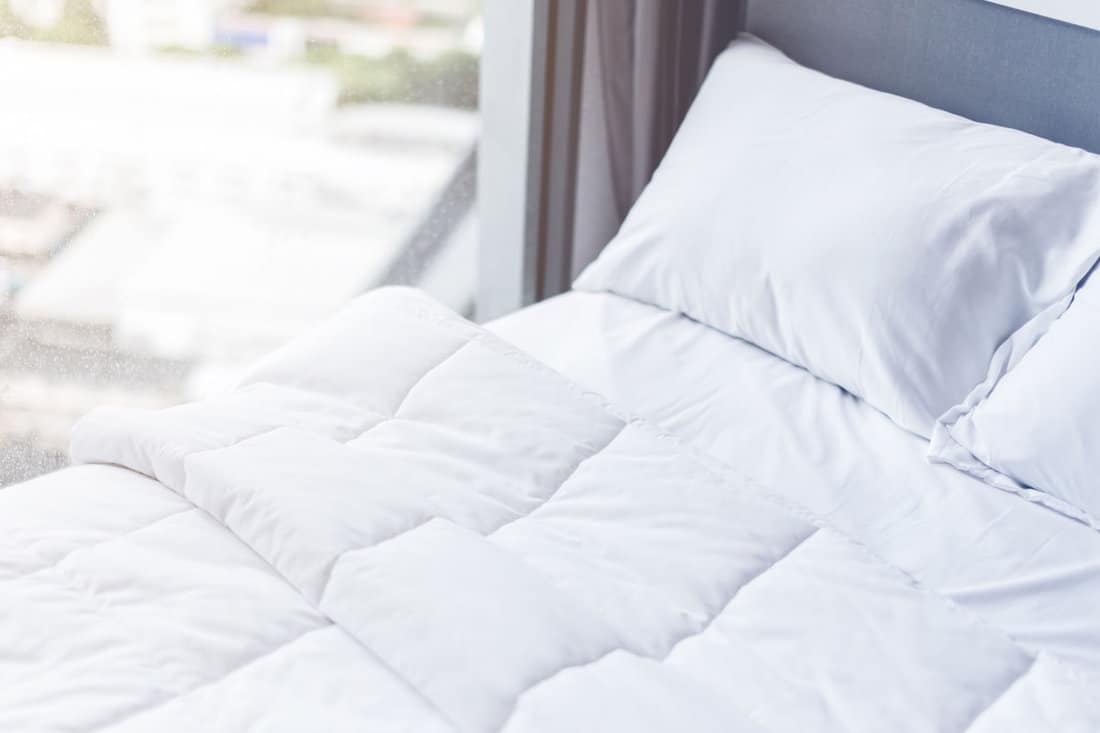
What Are The Disadvantages Of A Down Comforter?
While their comfort and warmth are undisputed, there are a few disadvantages of down comforters to be aware of.
First, down comforters are more expensive than comforters filled with synthetic materials. Second, down comforters need to be fluffed or shaken regularly to maintain their loft or fluffiness.
Also, the feathers can be a breeding ground for dust mites, which can be a problem for people with allergies. These are just a few things to keep in mind if you're considering purchasing a down comforter.
How Often Should I Wash My Comforter?
Depending on if you use a duvet cover or not, you may not need to wash your comforter as often as you think.
If you do use a duvet cover, you can simply remove it and throw it in the washing machine when it gets dirty. Even if the duvet isn't dirty, you should still wash it bi-annually to remove any dust or allergens that may have built up.
If you don't use a duvet cover, you'll need to wash your comforter more often. It's generally recommended that you wash your comforter every one to three months or so.
However, if you spill something on your comforter or it starts to develop an odor, you'll need to wash it sooner.
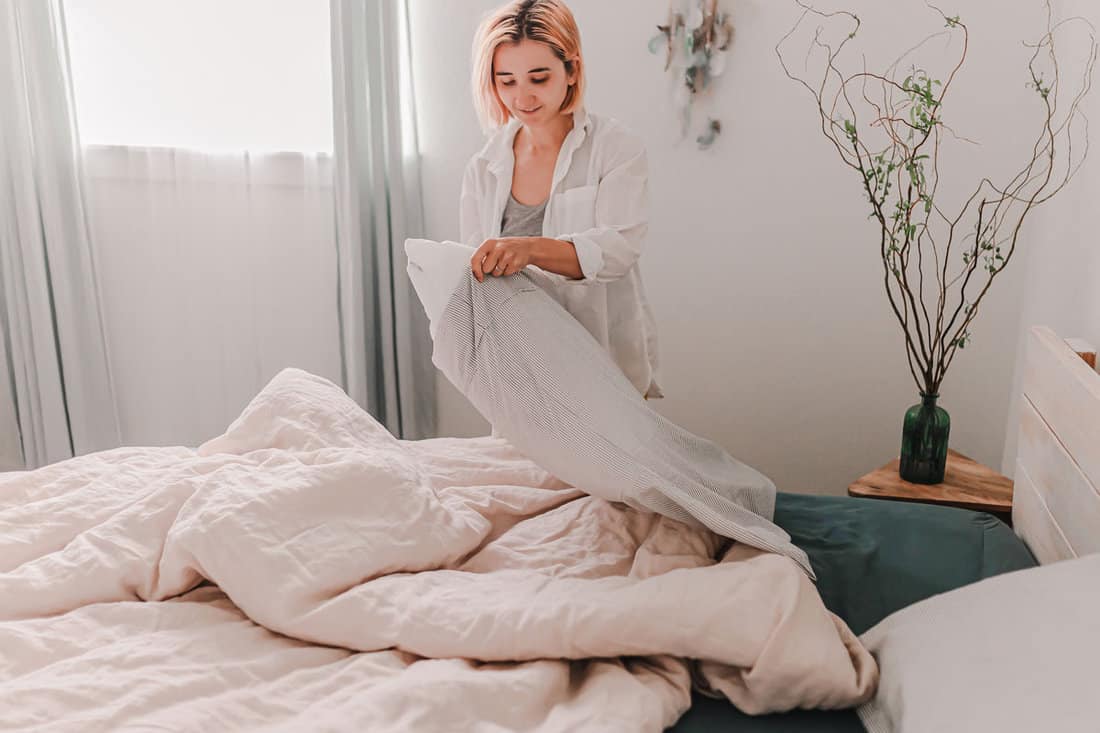
Can You Revive A Comforter?
If your comforter seems to be losing its fluffiness, there are a few things you can do to try and revive it.
First, try putting it in the dryer on low heat for 20-30 minutes. You can add a tennis ball in a white sock to the dryer to help fluff up the comforter.
You may need to repeat this process a few times. Each time, reposition the comforter in the dryer so that different areas are exposed to the heat.
If this doesn't work, you can also try hanging your comforter outside on a clothesline. Be sure to fluff it up periodically as it dries in the sun and fresh air.
You can also hang the comforter on a clothesline with the duvet cover on. This will evaporate any moisture in the comforter and also help to fluff it up.
However, if you have a large comforter, it may need to be professionally dry cleaned to restore its fluffiness. Commercial cleaners have bigger machines that can handle large comforters and will also add a special drying and fluffing process.
How Much Is A Duvet Cover?
Duvet covers can range widely in price depending on the size, material, and pattern.
Generally speaking, you can expect to pay between $20-200 for a duvet cover. However, it's not uncommon to find duvet covers for as little as $10 or as much as $500.
As with anything else, you get what you pay for. Higher quality duvet covers will be more expensive, but they'll also last longer and look better.
When shopping for a duvet cover, be sure to pay attention to the fabric. A higher thread count will usually result in a softer, more luxurious feel.
Same with your comforter, check how the duvet cover should be cared for. Some duvet covers are machine washable, while others need to be dry cleaned.
Be sure to choose a duvet cover that's easy to care for so you can keep it looking its best for years to come.
How Often Should You Replace A Duvet Cover?
Like the comforter itself, how often you need to replace a duvet cover will depend on how often you use it and how well you take care of it.
Ideally, a duvet cover should be replaced every two to five years. This may seem like a short time frame, but duvet covers can take a lot of abuse.
Since they come into contact with your body, they can become stained with sweat and body oils. They can also become faded or misshapen from being washed too often.
If you take good care of your duvet cover and wash it according to the manufacturer's instructions, it should last for several years. However, if you start to notice that the duvet cover is looking worn or faded, it's probably time to replace it.
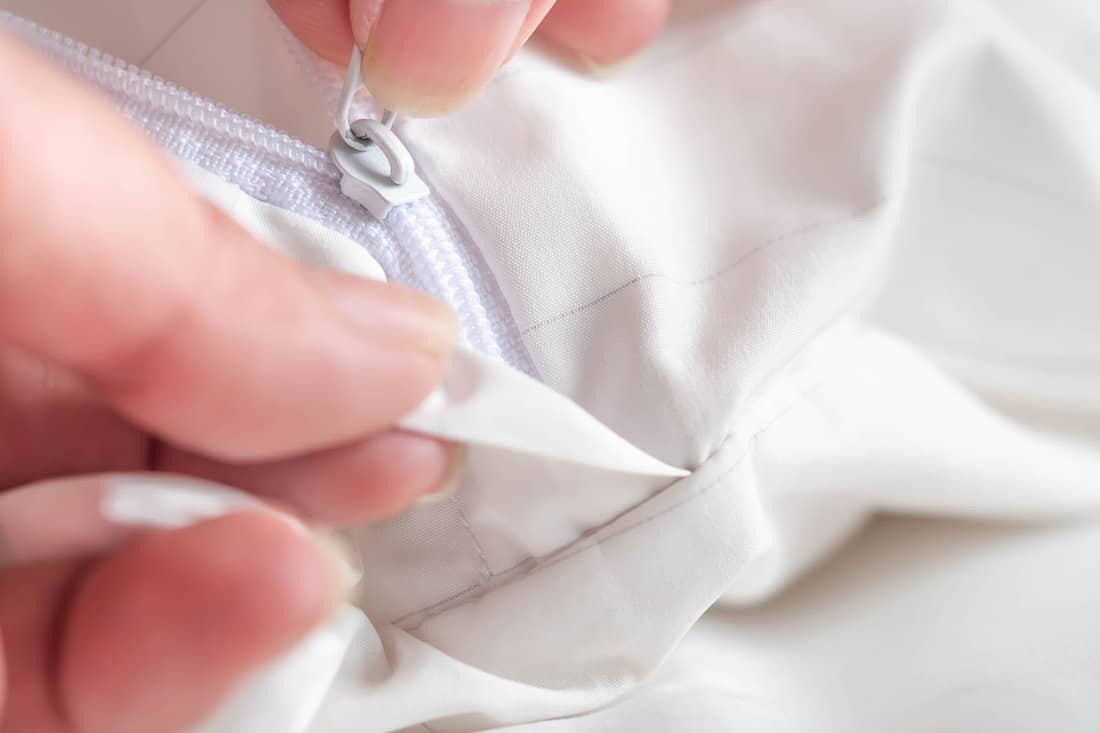
Why Do Comforters Go Flat?
There are a few reasons why comforters may go flat over time.
One reason is that the comforter isn't being properly fluffed. When you take your comforter out of the dryer, be sure to fluff it up and shake it out. This will help to redistribute the filling and keep it from going flat.
It also could be due to the quality of the comforter. If you buy a cheap comforter, it's likely that the filling will start to shift and go flat over time.
A flat comforter can also be a result of dirt buildup. If your comforter isn't being properly cleaned, the dirt and dust will weigh it down and make it go flat.
Final Thoughts
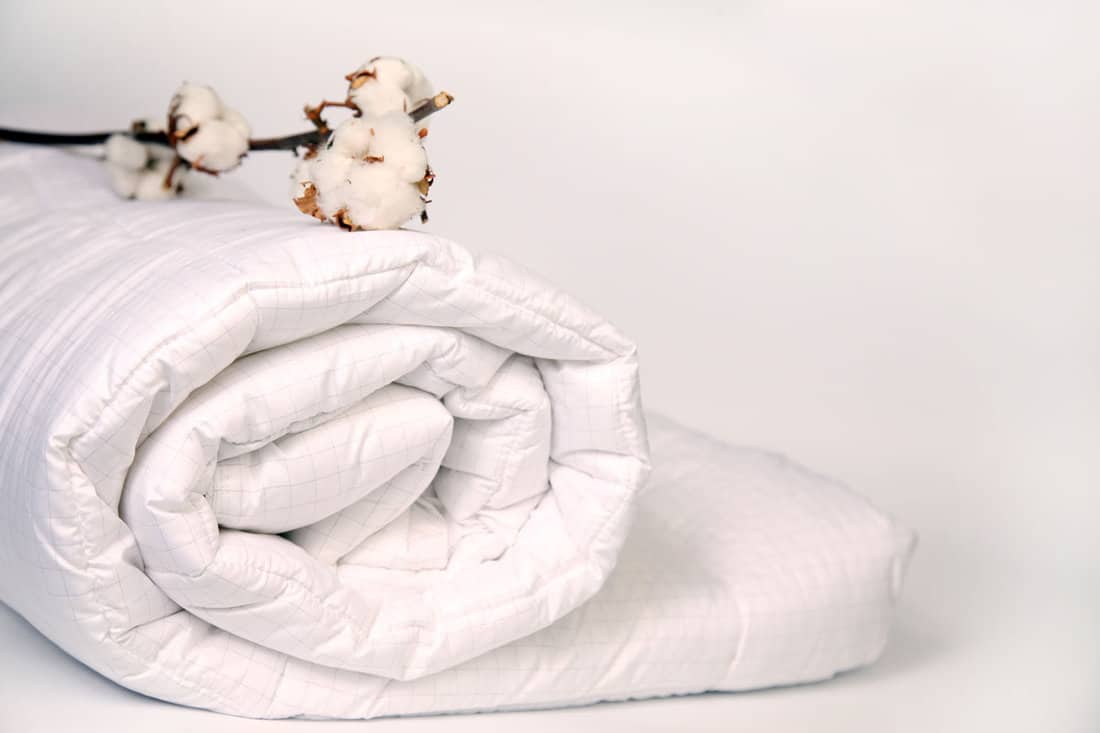
Overall, by using a duvet cover, you can extend the life of your comforter and keep it looking its best for years to come. However, be sure to clean and care for both the duvet cover and comforter according to the manufacturer's instructions.
Made it to the end? Here are other articles you might enjoy:
What Color Sheets Go With A White Comforter?

